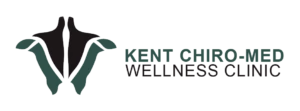It’s time to learn about T.I.S syndrome! Often, many patients are presenting to us with complaints of pain down the upper extremity. It can be described as a painful “zingy”, “tingly”, or “numbness” feeling. Most practitioners specializing in the musculoskeletal system often would relate this type of presentation to a bulging disc in the neck, or some sort of arthritic changes, inducing pinched nerves. Yes. They can explain the pain. However, not entirely, especially if the treatment plan proposed failed big time.
A complaint we come across a lot in our practice at Kent Chiro-Med Wellness Clinic is the Triangular Interval Syndrome (T.I.S). It’s one of the most important differential diagnoses for pain in the upper extremity. It’s also the most commonly overlooked by doctors.
The T.I.S is basically a neuromuscular condition where an important nerve called “Radial Nerve” (responsible for sensation and motor function in the arm, forearm and hands) gets pinched in a triangular space found in the armpit. This dreaded Bermuda triangle is formed by 3 walls: the superior wall (Teres Major muscle), the medial/inner wall (Long Head of the Triceps muscle) and the lateral/outer wall (The Humerus or arm bone). Inside those 3 walls, you have the radial nerve and profunda brachii artery. Pretty much, the bottom line is that you don’t want to mess with those 2 structures! Patients who suffer from T.I.S exhibit positive radial nerve pain without any positive provocative cervical tests. However, they may experience their symptoms when the doctor palpates their outer scapular area and armpit.
The problem with this triangle is that it is already super narrow. Sometimes, scar tissues and fibrous bands can be found between the Teres Major and Triceps muscles. These unwanted tissues will cause reduction in the cross sectional size of that triangular space when the patient rotate his shoulder. Patients often present with arms in concomitant normal resting adduction position (meaning the arm is going toward the center of the body), internal rotation position (meaning the arm’s position when the thumb is pointing backward) and forward rounding of the shoulders. This position will lead to Teres Major muscle contracture. In addition, an increase in the thickness of this muscle can occur secondary to weight training and can potentially compromise the triangular interval with resultant entrapment of the radial nerve. Shoulder dysfunctions and restricted external rotation of the arm caused by prolonged hours on the computer or driving can have a potential for shortening and causing hypertrophy of the Teres Major and Subscapularis muscles (both internal rotator muscles of the arm). Repeated forceful extension seen in weight training and sport involving punching may be a precedent to this scenario.
In my experience, manual therapy, neural mobilization, cervicothoracic junction mobilization and adjustment, core corrective exercise and pain modalities help a lot. Reduction in symptoms should begin to be observed with a decrease in scapular and arm pain and improved radial nerve mobility.
